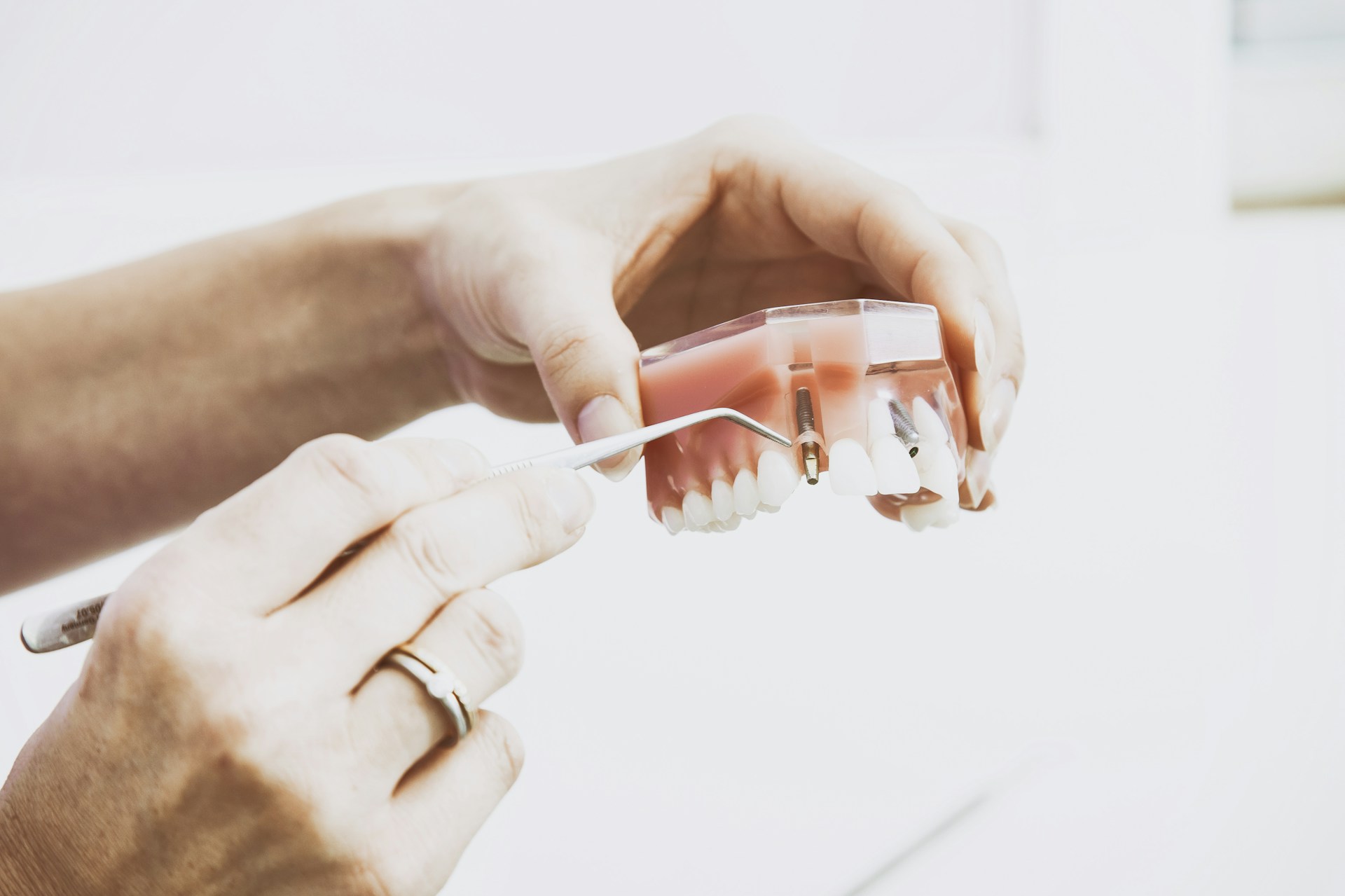SMILE- It costs nothing !!!
Prevent Baby Bottle Tooth Decay: Tips & Treatments
Learn effective strategies to prevent and treat baby bottle tooth decay. Discover the causes and symptoms of nursing bottle caries, along with treatment options for children aged 3 and older.
5/12/20253 min read
Baby Bottle Tooth Decay: Causes, Prevention & Treatment
What is baby bottle tooth decay?
Baby bottle tooth decay, also called nursing bottle caries or bottle mouth syndrome, is tooth decay in infants and toddlers caused by prolonged exposure to sugary liquids like milk or juice. It often affects the upper front teeth and can lead to pain, infection, and early tooth loss if left untreated.
Baby bottle tooth decay, also known as nursing bottle caries or bottle mouth syndrome, is a serious condition that affects infants and toddlers. It often begins with white spots on the front teeth and can progress to severe tooth damage if left untreated.
In this blog, we'll explore the causes, signs, prevention tips, and available child tooth decay treatment options, including for a 3 year old tooth decay treatment. If you're a concerned parent, this guide is for you.
What is Baby Bottle Tooth Decay?
Baby bottle tooth decay refers to tooth decay that occurs in babies and toddlers due to prolonged exposure to sugary liquids like milk, formula, or fruit juice—especially when a bottle is used during sleep.
It commonly affects the upper front teeth, but other teeth can be involved too. This condition is also known as:
Nursing bottle caries
Bottle mouth syndrome
The decay may look like brown or black spots on the teeth and can lead to pain, infection, or even early tooth loss.
Related : Brown stains on kids teeth
Causes of Baby Tooth Decay
Several habits contribute to baby tooth decay, including:
Letting your baby sleep with a bottle filled with milk or juice
Frequent and prolonged use of pacifiers dipped in sweet substances
Poor oral hygiene from an early age
Lack of fluoride exposure
These habits allow sugar to linger on your baby's teeth, feeding harmful bacteria that cause nursing bottle caries.
Signs and Symptoms of Bottle Mouth Syndrome
Early detection of baby bottle tooth decay is crucial. Look out for:
White spots on teeth (early decay)
Brown or black stains
Swollen or bleeding gums
Bad breath
Fussiness or discomfort while eating
Visible holes in the teeth
If you notice any of these, consult a dentist immediately for child tooth decay treatment options.
Related : Kids toothache
How to Prevent Baby Bottle Tooth Decay
Prevention starts early—even before the first tooth appears.
Tips to prevent nursing bottle caries:
Wipe your baby’s gums with a clean cloth after feeding.
Start brushing with a soft baby toothbrush once the first tooth erupts.
Avoid putting your baby to bed with a bottle.
Don’t dip pacifiers in honey or sugary liquids.
Wean your child off the bottle by age one.
Encourage drinking from a cup.
Schedule your child’s first dental visit by their first birthday.
3 Year Old Tooth Decay Treatment
If your child is already experiencing decay at age three, don't panic. Dentists offer various 3 year old tooth decay treatment options depending on the severity:
Treatment options may include:
Fluoride treatments to remineralize early decay
Dental fillings for small cavities
Pulp therapy (baby root canal) if the decay has reached the nerve
Crowns to restore badly decayed baby teeth
Tooth extraction in severe cases
Modern pediatric dentistry makes these treatments gentle and effective. Remember, untreated baby tooth decay can lead to speech problems, difficulty chewing, and future dental issues.
Best Child Tooth Decay Treatment Options
Common treatment options include:
Fluoride Treatments
For early-stage baby tooth decay, fluoride varnish or gel may help remineralize the enamel and reverse the decay.Dental Fillings
If cavities have formed, the decayed portion of the tooth is removed and filled with tooth-colored or silver material.Pulpotomy (Baby Root Canal)
If the decay has reached the pulp (nerve) of the tooth but hasn’t infected the root, a pulpotomy is performed to remove the affected pulp tissue and seal the tooth.Stainless Steel Crowns
These are commonly used in children to restore baby teeth that are too damaged for a filling but still worth saving until they naturally fall out.Tooth Extraction
In cases of severe nursing bottle caries, where the tooth cannot be saved, extraction may be necessary. A space maintainer might be used afterward to prevent shifting of other teeth.
Baby bottle tooth decay, or bottle mouth syndrome, is preventable with the right habits and early dental care. Avoid letting your child fall asleep with a bottle, maintain good oral hygiene, and visit the dentist regularly.
If your child is already showing signs of baby tooth decay,visit your dentist immediately for appropriate treatment.
By understanding and addressing nursing bottle caries early, you set the foundation for a lifetime of healthy teeth.
FAQs
Q: What age does baby bottle tooth decay usually start?
A: It can start as early as 6 months, once the first teeth appear.
Q: Is baby tooth decay reversible?
A: Early-stage decay (white spots) can sometimes be reversed with fluoride. Advanced decay requires professional treatment.
Q: Can a 3-year-old get a root canal?
A: Yes, if the decay has reached the pulp, a baby root canal or pulpotomy may be needed.
Q: Is bottle feeding at night harmful?
A: Yes, prolonged bottle feeding at night is the main cause of nursing bottle caries.

Contact Smiles
drdeepi15@gmail.com
Dr. Deepika B.D.S
© 2025 SmileWide Dental. All Rights Reserved.
Have doubts ..?


